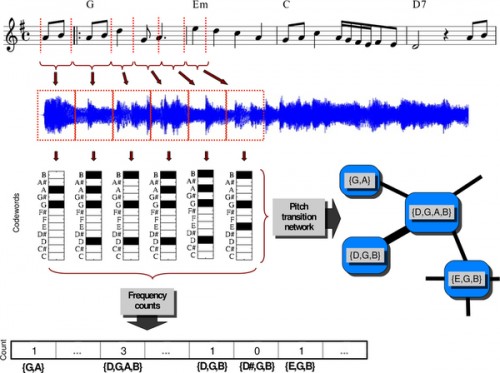There has been loads of talk in recent years about the loss in dynamic range of music – the so-called ‘loudness wars’. Basically, to make the quick impression required by the short-attention span internet age listener, a song needs to ‘pop’ and has about 10-15 seconds to do it. The quick cure for that is simply to bring everything to the front in the mix and make the difference between the loudest and softest sounds smaller (i.e. reduce the dynamic range).
Now a study noted at Reuters looks at this in further detail, as well as categorizing the ‘musical diversity’, and comes to the basic conclusion that popular music has become louder but less harmonically diverse.
Researchers in Spain used a huge archive known as the Million Song Dataset, which breaks down audio and lyrical content into data that can be crunched, to study pop songs from 1955 to 2010.
A team led by artificial intelligence specialist Joan Serra at the Spanish National Research Council ran music from the last 50 years through some complex algorithms and found that pop songs have become intrinsically louder and more bland in terms of the chords, melodies and types of sound used.
“We found evidence of a progressive homogenization of the musical discourse,” Serra told Reuters. “In particular, we obtained numerical indicators that the diversity of transitions between note combinations – roughly speaking chords plus melodies – has consistently diminished in the last 50 years.”
They also found the so-called timbre palette has become poorer. The same note played at the same volume on, say, a piano and a guitar is said to have a different timbre, so the researchers found modern pop has a more limited variety of sounds.
Intrinsic loudness is the volume baked into a song when it is recorded, which can make it sound louder than others even at the same volume setting on an amplifier.
The music industry has long been accused of ramping up the volume at which songs are recorded in a ‘loudness war’ but Serra says this is the first time it has been properly measured using a large database.
Again, neither of these things are all that surprising. Pop music tends to operate in strictly minor or major keys, use easily followed chord sequences with few shifts, and employ simplistic and easily remembered melodies. What’s more, so-called ‘song-writing camps’ bring together many of the same writers and producers to try to pump out hits for an artist or group, meaning that they will bring the same ideas and influences – and since the bias is towards writing hits, there will be a noticeable tendency to stick to what works and is somewhat familiar. All of this narrows the possibilities for new songs to actually sound different.
And … if you want to read all of the details in the full report, head here.
